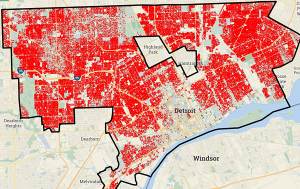From the NY Times:
In 1492, after an arduous voyage aboard Columbus’s vessel the Santa María, Rodrigo de Triana, a lookout, bellowed, “Tierra!”
This is pretty much how Corey Ferrell, a commuter, sometimes feels upon docking at his Manhattan office following a heroic three-and-a-half-hour, one-way commute — by bicycle, two trains, and on foot — from Oxford, Conn.
About 180 miles to the west, in Bethlehem, Pa., Scott Ubert, a corporate chef in Manhattan, starts his extended day at 5 a.m. An hour later, coffee in hand, he drives 10 minutes to an open-air bus stop where he catches the 6:20 to the Port Authority Bus Terminal — two hours if the stars align. From there, he has a leg-stretching 20-minute walk to work.
“The ride is pretty comfortable,” Mr. Ubert said. “But just hope you don’t get one of the old clunkers.” Like nearly all “extreme commuters” — defined here as people who commute a minimum of two hours each way, five days a week — Mr. Ubert settles in, pulls out his iPhone and laptop and gets to work answering emails, texting and planning menus. He typically logs a 10- to 12-hour workday, returning home at close to midnight.
“My wife always waits up, which is nice,” Mr. Ubert said. “Our little guy goes to bed at 9 p.m., which is not so cool, but he loves the backyard and neighborhood, so it’s completely worth it.”
At first Mr. Ubert thought he would hate the commuting life, but that soon changed. “It’s really not so bad, and what we get in return is amazing.” What they get in return is a 3,100-square-foot, five-bedroom, four-bath colonial on one rustic acre, for which they paid $375,000 last year.
“It’s true, we are living the American dream, with deer running around in our yard, and bald eagles, too.”
Escaping to the distant exurbs is not new, although the frontier for the New York area seems to be expanding deeper into regions like Bucks and Pike counties in Pennsylvania — even to Philadelphia; Dutchess, Rockland and Orange in New York; Sussex and Warren in New Jersey; and New Haven and Middlesex in Connecticut. These commuters are heeding the old real estate adage: “Drive until you qualify.” This suggests that you explore farther and farther out until reaching the off ramp where houses meet your style and budget.
It would be an overstatement to say extreme commuting is a major trend. After all, how many people can withstand 200 hours a month traveling back and forth? On the other hand, given the woeful state of New York City’s transportation network this summer, a five-mile commute can feel like hitchhiking to the Catskills.
For those who can, however, the motivations are similar: the need to leave an unaffordable city, expanding families, a search for better schools, tranquil environs and more real estate bang for the buck. And as employers become more open to flexible work hours, combined with technology that makes it easier to carry the office with you, the long-distance commute is expected to grow significantly.
“Technological changes have made it more possible to redefine the workplace,” said Mitchell L. Moss, director of the Rudin Center for Transportation at N.Y.U. “Even in New York City, which has been famous for not allowing people to work at home, there is now more tolerance of flexible time.”

